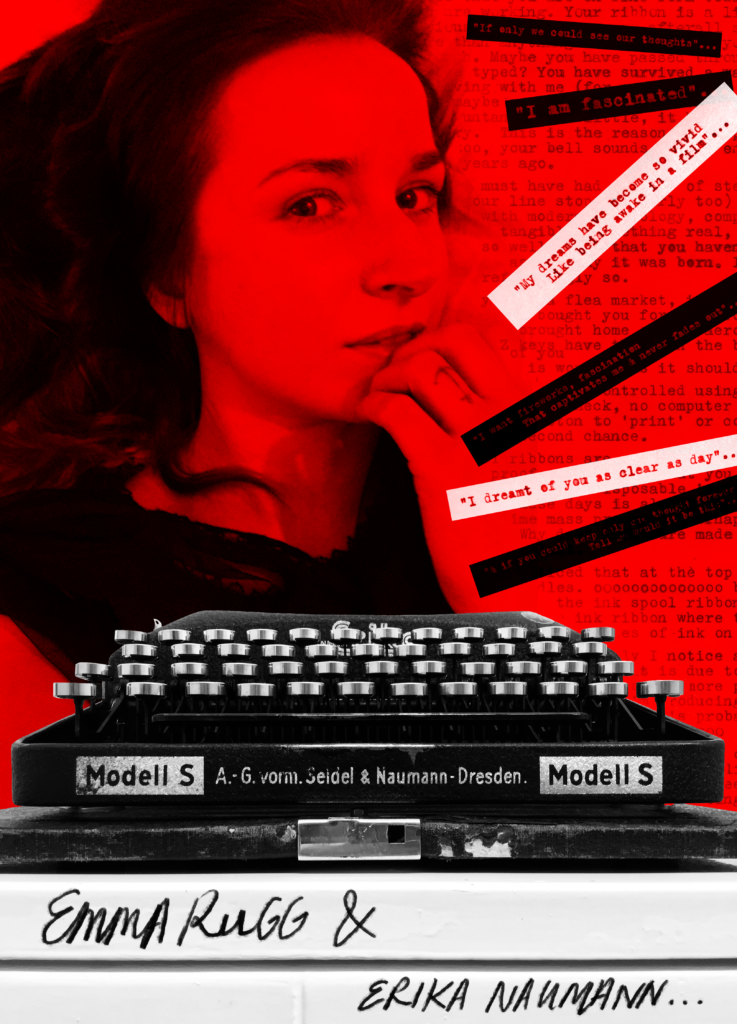ERIKA NAUMANN & EMMA RUGG
Erika’s serial number puts her into the 1936 era of Modell S typewriter production by Seidel & Naumann…
I can’t help but wonder, who did she belong to before me? Whose fingers have struck her glass-covered keys? Where did her previous owner/s live and what did they do? What thoughts have manifested themselves into words typed out by the hands of such strangers?
When they were first produced for sale, typewriters were a luxury item. For the price of $100 (roughly $2,722 in today’s money in this instance), acquiring one in 1874 meant that you probably owned a Sholes & Glidden machine as these were the very first commercially successful typewriters to be produced.
In the late 19th and early 20th century, typewriters became a mainstay in the office and brought many women into the workforce, empowering them along the way. Having long fingernails was not recommended however, as the keys of the machine would surely break them!
Typewriters have evolved vastly from their earlier manual counterparts to being fully electronic word processing devices. Before the advent of the home computer they were the go-to writing companion. You can still buy them new now but they are nowhere near as beautiful as their earlier manual predecessors.
On any given evening I often find myself typing something. I write on paper far more than I do in any digital format so this gives my work a sense of tactility. The keys are heavy and solidly built and it takes some effort to produce a character. You can make mistakes with a typewriter and they remain, or you can type back over them or start again. Making mistakes is part of the charm of the typewriting process and also what makes it so imperfectly perfect.
I found my Erika Naumann Modell S in a flea market in Amsterdam years ago. I paid 23 euros for it. I restored it and brought it back to fully working order even though it was in pretty good condition to begin with. The letters on the top row of most typewriters spell the word ‘typewriter’. Because my Erika model was produced in Germany the Y is replaced by a Z. Most typewriters produced in Europe omit the Y because Z is a much more commonly used letter in this part of the world.
I often wonder if I should acquire another typewriter but am aware that my Erika may possibly become jealous of the presence of another machine. If one day I decide to bring another typewriter into my life it would surely be an Imperial typewriter.
My Mother worked at the Imperial Typewriter Company factory in Hull and there she met my Father so without typewriters, technically I would have never even existed. My Father went on to become an Aeronautical Engineer working in the military aircraft sector, he encouraged me to be creative in any way possible.
In a possible near-dystopian future I’d like to imagine – in a scenario I obviously made up (as I often do) – that the manual typewriter could play some part in preserving the literary history of mankind. It remains untouched by artificial intelligence. Perhaps the typewriter could become a contraband item in a society where information is seized and destroyed? Perhaps it could one day exist on another planet? Perhaps it may come to be protected in a classified vault as specimens of precious species are? It is a world away from the exciting technological age we now live in. It cannot be tracked, printed or copied without the user employing another device to capture its original output.
There is something comforting about the sound a typewriter makes and you cannot use it without producing some kind of noise. Each machine has different nuances in the way it sounds. I wonder; will these sounds become lost? I surely hope not. How many people have never even heard them? In today’s often pre-planned obsolescence driven society the earliest typewriters – many of which still work now (with the right maintenance) – are a distinct laugh in the face of consumer throwaway-ism.
How many mementos of love or messages or war have been declared using this machine? How many iterations and prototypes made this mechanical marvel what it became? I’d like to share my love of this device with you as often as I can because I owe a lot to it. It is a huge part of my life and the way in which I work. It is my muse and my passion.
In the lives of many people, this innovative invention now plays little or next to no part and has been replaced by mobile technology. It is the earliest computer; the mother machine to which we owe so much of our ability to communicate with one another the way we do today.
The typewriter…











































Leave a Reply
You must be logged in to post a comment.